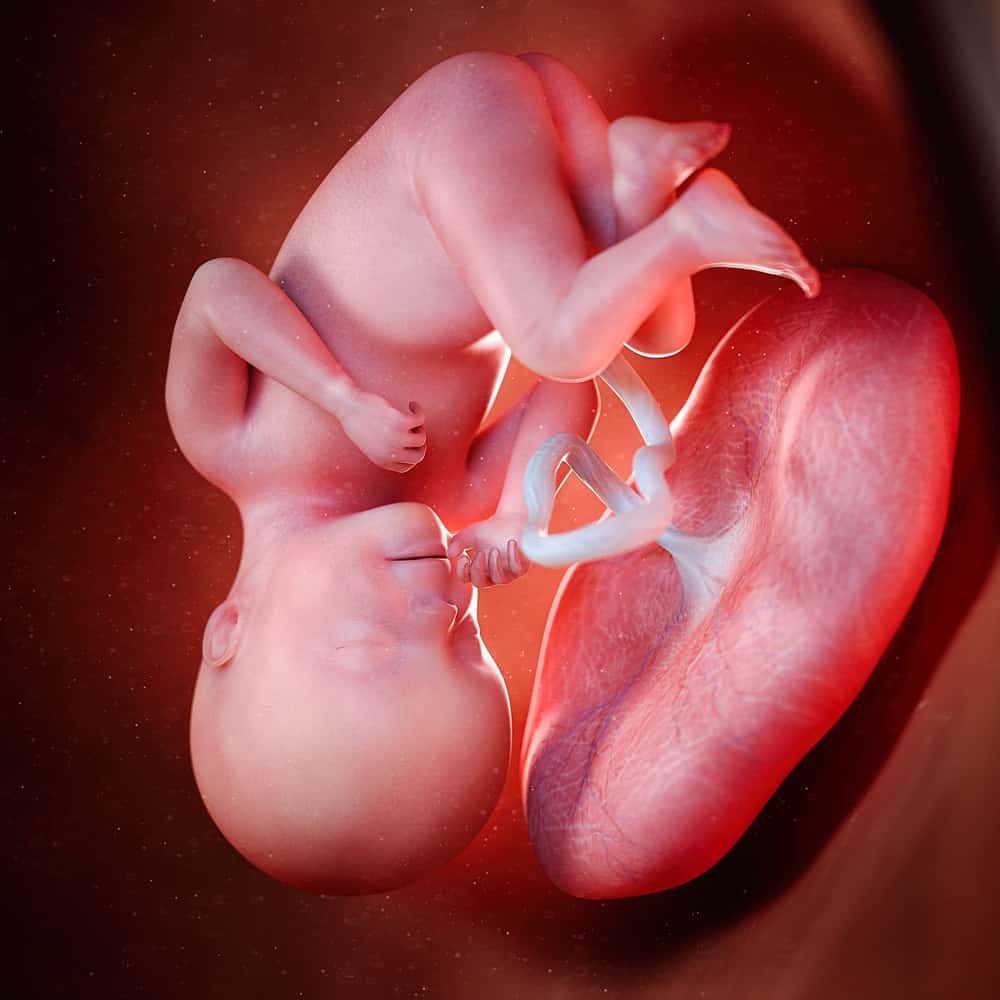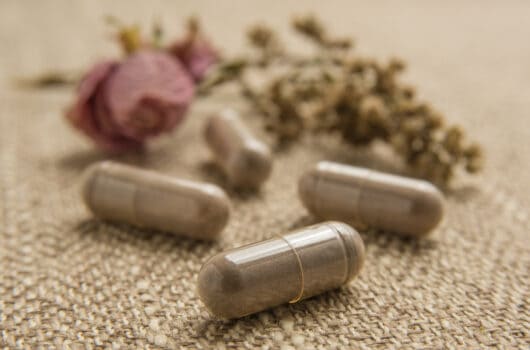Since the 1970s, the trend of bringing home your placenta has been on the rise. One of the most controversial disposal methods involves preparing and eating the placenta after birth.
You might be wondering if you should consider it after the birth of your child. There are strong opinions on both sides, and with celebrities popularizing the practice, it can be hard to find clear-cut answers to your questions.
In general, so long as you don’t eat the placenta raw it’s generally believed to be fairly safe, though it isn’t totally absent of potential side effects. That being said, the claimed benefits of eating the placenta are questionable, so there isn’t really much of a proven reason to do it, either.
But are there any benefits to humans eating the placenta? Is there a history of this in various cultures? Are there risks to your and your child’s health if you eat the placenta?
In this guide, we hope to answer some of these questions and explore this hotly debated topic in detail.
What Is the Placenta?
This special organ helps deliver nutrients and oxygen to your baby in-utero. The placenta is unique because it’s the only organ that the human body grows in adulthood and then discards.It also serves as a filter that collects and contains the child’s waste products during development. After birth, it serves no purpose.
Placentophagy
Eating the placenta, known placentophagy, is very common among rodents, but is also seen in some primates and other mammals. While there’s no one definite reason why they do this, scientists have several theories that they believe explain these animals do engage in this practice.
One hypothesis is that mammals may engage in placentophagy simply to satisfy their hunger and replenish their bodies after pregnancy and delivery. It can also be a protection against predators in the wild who may be attracted to the scent of blood.
By disposing of it quickly, it can help keep the nest more hygienic as well. This is the same reason while some mammal mothers will eat their babies’ waste as well.
History of Placentophagy Among Humans
One might assume that there is a long and storied tradition throughout human history of people eating placenta, but that’s not the case. This idea is largely driven by misinformation. There are very few historical examples of placentas being consumed after birth in human society.
Many cultures do have specific traditions for disposing of placentas, particularly by burying them. Some cultures held superstitions regarding the placenta’s connection either to the child’s life, or the mother’s fertility.
In some cultures, the placenta is regarded as a sort of “twin” to the living child and is therefore swaddled and buried with signs of affection. The disposal methods reflect the cultural beliefs of a community. In the Philippines, for example, there is a tradition of burying the placenta with books in the hopes of your child growing up to be smart and studious.
Medical Use of the Placenta
There are a few examples of placentas being used as medicine, rather than a meal. In most cases, the placenta would be dried and turned into a powder. In Li Shi-Zhen’s 16th-century manual of traditional Chinese medicine, there are several recipes that include dried placenta. It was believed that the placenta contained powerful life-force energy that could help the body heal.
A similar historic Korean tradition was to cremate the placenta and keep the ashes. The ashes would then sometimes be used in a medicinal drink if the child became ill.
It wasn’t until the 1970s that human consumption of placentas started to be recorded. At this time, home births and homeopathy were on the rise. People were beginning to look for more natural and traditional health options and eating the placenta, which is common in the animal world, seemed like it might be one of those more natural options.
Modern Popularity
The trend of placentophagy fully took hold in the U.S. in the 1980s, after the midwife Raven Lang began publishing works that incorporated Chinese medicine theories with modern midwifery. It was then that the idea of eating one’s placenta became something that celebrities and tastemakers were seen doing. More and more everyday people started to wonder if it might be the more natural course of action.
This idea has been further popularized by influencers like Kim Kardashian. While she is not typically recognized as an expert on organic and holistic living, she is a hugely influential person in the realm of lifestyle. Many other female celebrities have openly discussed their decision to ingest their placenta in various forms.
Why Do People Eat Placentas?

There are plenty of theories about the benefits that consuming the placenta might have. This organ is full of hormones, iron, and B vitamins. Remember, it filtered all the nutrients going to your baby in-utero.
One of the biggest beliefs people have about placentophagy is that it may help ward off the postpartum depression that can come about from the dip in your hormones after delivery. Others hypothesize that it can also help increase your milk supply. Studies done on rats suggest that (in rats, anyway) that it can also increase a mother’s pain tolerance.
B vitamins are also essential to maintaining healthy energy levels, so that, combined with the cocktail of hormones within a placenta, could potentially increase a mother’s energy and improve her mood.
Some people also like the feeling that they are engaging in an ancient practice that is performed by many mammals. They might feel that they are bucking the sterilized medical establishment of the modern world for something more organic.
Many holistic and traditional medical practices are now being acknowledged by modern medicine, showing that our ancestors had collective knowledge that was valuable and deserves to be protected. Though, as mentioned earlier, very few human cultures consumed the placenta in any way historically.
How Is the Placenta Typically Prepared?
So how do people go about the practice of placentophagy? You will need to inform your midwife or doctor in advance to ensure that the placenta is preserved after your delivery. Typically, it will be discarded in a sanitary way with all the other medical waste, as it is a biohazard. Many medical practitioners aren’t a fan of the practice, so you may need to persuade them, or find someone who is more open to the idea.
Thanks to the growing demand, more midwives are becoming familiar with the practice. Some may even help you prepare the placenta afterward. It’s important to remember that just like any other meat, placentas need to be prepared hygienically and can spoil quickly.
While some women believe that consuming the placenta raw is the best way to get its full benefits, there are other options. Raw placenta consumption is most often done in the form of a smoothie, after first freezing the organ.
Some women will cook it like any other cut of organ meat. They report it has a meaty, beef-like taste and texture. You can also dehydrate and grind it up yourself to use medicinally.
A more popular option in recent years has been to have your placenta processed into capsules. The average placenta can make 100-200 capsules that can be taken on a daily basis postpartum. It’s a pricey service that has no standardization for safety or sterilization, but if the idea of processing your own placenta seems rather daunting (or disgusting), it is an option.
What Are the Health Risks of Placentophagy?
While the side effects of placentophagy, particularly in capsule form, tend to be uncommon, the evidence of its benefits for humans is pretty thin. It’s important to remember that your placenta has served as a sort of filter protecting your baby from your immune system and any other harmful chemicals you’ve been exposed to. It also collects all the waste your child produces while in the womb.
Just like eating any raw meat, consuming your placenta raw can expose you to many forms of bacteria that were filtered out by this organ during pregnancy. And it should be noted that there have been recorded issues of contamination even with placenta capsules. In 2016, capsules were found to contain the dangerous Streptococcus bacteria, which can infect the respiratory system, better known as strep throat. In serious cases, this infection can lead to pneumonia. One of the mothers who consumed these tainted pills passed this infection on to her child.
Toxins you’ve been exposed to, such as mercury and lead, will be present in the placenta. While in the previous study, the levels of these compounds were found to be within a safe threshold, your body filtered them out for a reason, to protect your developing fetus. By consuming your placenta now, you could be giving these chemicals back to your child through your breastmilk.
Is It Worth It?
There is very little evidence of the proposed benefits of placentophagy, but there are several documented risks. Some experts also wonder if the positive effects on energy and mood could be more from a placebo effect than any actual nutrition found in the placenta. However, there are many vitamins and herbal supplements to help regulate energy and mood that have fewer risks for contamination.
If you suffer from conditions like preeclampsia, this could further compromise your placenta as it results in reduced blood flow through the organ. If you experience preeclampsia, most midwives won’t recommend consuming your placenta.
Overall, most respected sources still see placentophagy as fringe medicine. None of the studies conducted in recent decades have found a significant link between eating placenta with the hypothesized benefits. Due to the potential risks, most health experts don’t recommend it.
Making the Right Choice
If you decide that the potential benefits of placentophagy are worth the risks, then you should carefully consider your options. Make sure that you make a birthing plan with your healthcare provider in advance that includes how you want your placenta to be treated.
Due to our research, we can’t recommend consuming your placenta raw, as that exposes you to the most bacteria. Of course, you will need to do your own research and look at your options. If you choose to prepare your own placenta, make sure you do so right away or freeze it to prevent spoiling. Follow strict cleanliness practices in the kitchen to make sure that like any other raw meat, you don’t contaminate your kitchen surfaces and other food.
If you decide to have capsules prepared by an outside source, be certain to choose a reliable preparer with a proven track record. Your midwife or birthing center may be able to recommend a service for you.
It’s important that you never consume anyone else’s placenta, as this exposes you to more bacteria and minerals from another person’s body. This can pose a greater danger to you. Even if you consume your own placenta via pills or after cooking, you should also monitor yourself afterward for any symptoms of infection. Listen to your body and contact your doctor if you believe something is wrong.
Should I Eat My Placenta?
Some women swear by placentophagy as a way to help smooth their body’s transition into motherhood. But plenty of others are wary. Both are valid decisions and what’s right for one person won’t be for another. You have to consider your own health and needs when making these decisions.
For some mothers who are at high risk for postpartum depression, or who have already suffered from it with one pregnancy, the possible benefits from the placenta in that regard might be a huge selling point. If you suffer from anemia, the iron-content of your placenta could also be tempting.
In other cases, depending on pregnancy complications or your exposure to potentially harmful substances during pregnancy, it might be a dangerous proposition to eat the placenta. It doesn’t make you more or less of a mother, no matter your decision.
Final Thoughts

As with anything regarding natal health, there is a lot to weigh and consider. You’re not just making decisions for your own body anymore, but for your little one too. If you are breastfeeding, anything you consume will be passed on to them. This also must be considered when deciding whether or not to practice placentophagy.
If you decide that eating your placenta is not something that you feel comfortable doing, but you don’t want yours to go out with the trash, there is another option. You could revive the ancient tradition of burying your placenta. By burying it under an adolescent tree, you will feed its growth so you can watch it grow and flourish alongside your child. This simple and beautiful practice is well-documented historically and lets your body keep nourishing life even after your child is born. And that’s pretty amazing.
